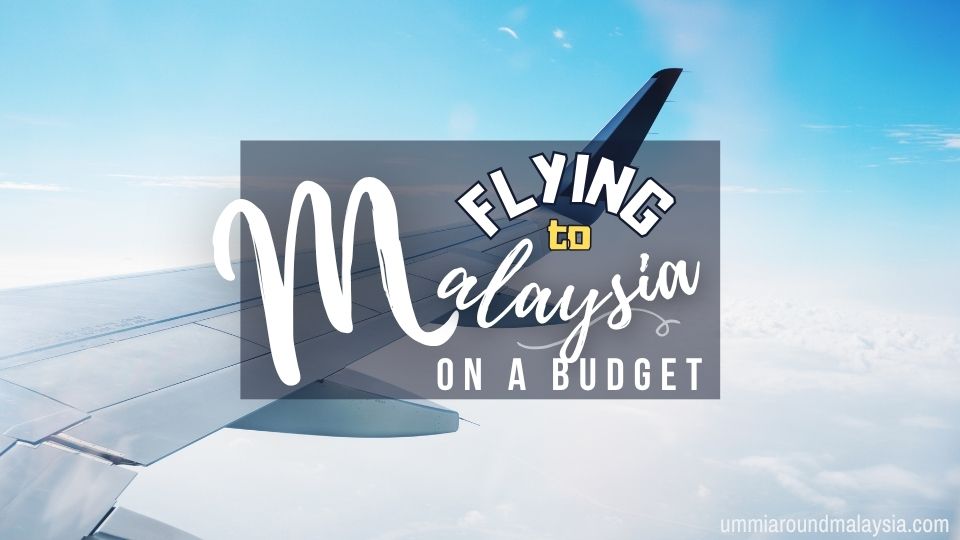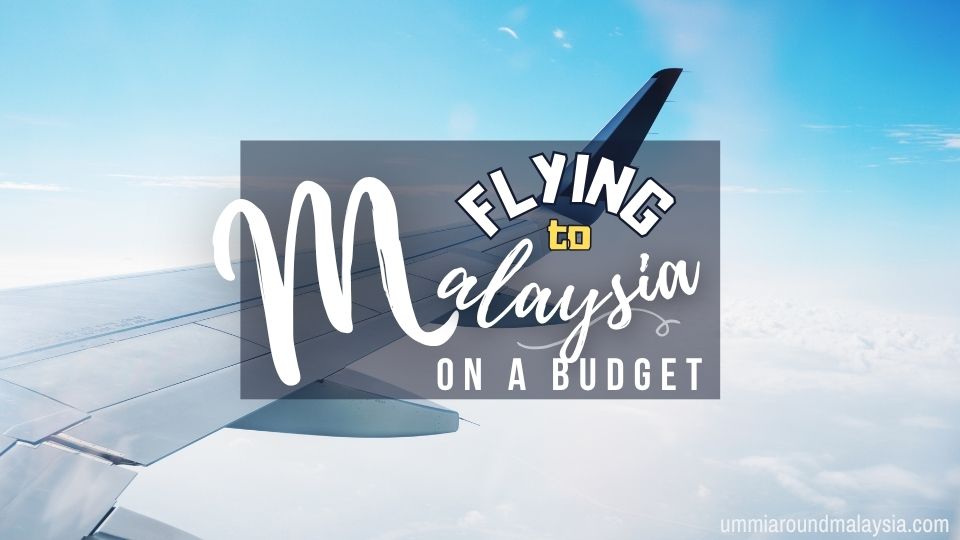
Malaysia, a dazzling jewel of Southeast Asia, is a land of incredible contrasts and breathtaking beauty. From the futuristic skylines of Kuala Lumpur to the ancient rainforests of Borneo, its diverse landscapes, rich history, and vibrant cultures beckon travelers from around the globe. While often perceived as a premium destination, the dream of exploring Malaysia is more accessible than ever, thanks to a wealth of options for securing cheap flights. This comprehensive guide will not only help you navigate the world of affordable airfare but also equip you with everything you need to know to plan an unforgettable Malaysian adventure, covering its top attractions, fascinating history, essential travel tips, accommodation, transportation, and the best time to visit.
Soaring to Savings: Your Guide to Cheap Flights to Malaysia
The journey to Malaysia begins with finding the perfect flight, and thankfully, numerous strategies can help you dramatically cut costs. The key often lies in flexibility, diligent research, and understanding the dynamics of airfare pricing.

Related Articles about Unlocking Malaysia: Your Guide to Affordable Adventures and Cultural Riches:
- Unveiling the Magic: A Comprehensive Guide to New York City’s Top Attractions
- The Archipelago’s Embrace: Your Comprehensive Guide to Traveling to Indonesia
- Phuket: Your Ultimate Guide to the Pearl of the Andaman Sea
- Toronto’s Grand Stays: Unveiling the City’s Best Hotels and Unforgettable Experiences
- Macau: Where East Meets West in a Glittering Tapestry of Luxury and History
1. Be Flexible with Your Dates and Airports: This is arguably the most impactful tip. Flying on weekdays (Tuesday to Thursday) is generally cheaper than weekends. Similarly, avoiding peak holiday seasons (e.g., Christmas, Lunar New Year, Eid al-Fitr) can yield significant savings. Consider flying into secondary airports if available and convenient; sometimes flying into a nearby city like Singapore or Bangkok and taking a budget flight or bus connection to Malaysia can be cheaper than a direct flight.
2. Leverage Price Comparison Websites: Tools like Skyscanner, Google Flights, Kayak, and Momondo are invaluable. They aggregate prices from hundreds of airlines and online travel agencies, allowing you to compare options side-by-side. Use their "anywhere" or "entire month" features to spot the cheapest times to fly. Set up price alerts for your desired routes and dates – these platforms will notify you when fares drop.
3. Embrace Budget Airlines: Southeast Asia is a hub for low-cost carriers, and Malaysia is no exception. AirAsia, the region’s largest budget airline, is based in Malaysia and offers extensive routes within Asia and beyond. Other budget options include Scoot (Singapore-based), Malindo Air (now Batik Air Malaysia), and sometimes even full-service carriers like Malaysia Airlines and Singapore Airlines offer competitive promotional fares. Be mindful of baggage allowances and other add-on fees when booking with budget airlines, as these can quickly add up.
4. Book in Advance, But Not Too Far: While last-minute deals can sometimes appear, booking 2-4 months in advance often provides the sweet spot for international flights to Malaysia. Airlines typically release their cheapest seats early, and prices tend to creep up closer to the departure date.
5. Consider Layovers: Direct flights are convenient but often pricier. Opting for flights with one or two layovers, especially if the layover is in a major hub city like Singapore, Bangkok, or Hong Kong, can significantly reduce the fare. Just ensure the layover duration is manageable and gives you enough time to connect.
6. Fly During the Off-Peak Season: Traveling during Malaysia’s shoulder or off-peak seasons (which often coincide with monsoon periods for specific regions, as detailed later) can lead to substantially cheaper flights and accommodation, along with fewer crowds.
By employing these strategies, you’re well on your way to securing an affordable flight, leaving more of your budget for exploring the wonders of Malaysia.
Malaysia’s Kaleidoscope of Attractions: A Journey Through Diversity
Malaysia offers an incredible array of attractions that cater to every type of traveler, from urban explorers and history buffs to nature enthusiasts and foodies.

Kuala Lumpur (KL): The Modern Metropolis
Begin your adventure in the bustling capital, Kuala Lumpur. The iconic Petronas Twin Towers dominate the skyline, offering breathtaking views from their Skybridge and observation deck. Nearby, the KLCC Park provides a green oasis, complete with a fantastic fountain show. For a spiritual and cultural experience, a short drive will take you to the Batu Caves, a series of limestone caves housing Hindu shrines, guarded by a colossal golden statue of Lord Murugan. Explore the vibrant Central Market for local handicrafts and souvenirs, and immerse yourself in the culinary delights of Jalan Alor, a famous street food haven.
Penang: The Pearl of the Orient
A UNESCO World Heritage site, George Town in Penang is a sensory feast. Its charming colonial architecture, intricate street art, and diverse cultural heritage (Malay, Chinese, Indian) make it a joy to explore on foot. Penang is also renowned as Malaysia’s food capital; sample hawker delights like Char Kway Teow, Assam Laksa, and Chendol. Take a funicular ride up Penang Hill for panoramic views or visit the majestic Kek Lok Si Temple, one of Southeast Asia’s largest Buddhist temples.
Langkawi: The Jewel of Kedah
For sun, sand, and sea, head to the duty-free island of Langkawi. Relax on pristine beaches like Cenang Beach, explore the ancient geological formations of the Kilim Karst Geoforest Park with its mangrove tours, or take the Langkawi SkyCab up Mount Machinchang for exhilarating views and a walk across the SkyBridge. The island also offers excellent diving and snorkeling opportunities.
Malacca (Melaka): A Living History Book
Another UNESCO World Heritage site, Malacca, offers a captivating glimpse into Malaysia’s colonial past. Wander through Jonker Street, famous for its antique shops, cafes, and night market. Visit historical landmarks such as the Stadthuys (Dutch Square), Christ Church, A Famosa Fort, and the ruins of St. Paul’s Church, all testaments to the Portuguese, Dutch, and British influences. A river cruise provides a charming perspective of the city’s heritage buildings.
Borneo: Wilderness and Wildlife
For the adventurous, Malaysian Borneo (comprising Sabah and Sarawak) is an unparalleled destination. In Sabah, challenge yourself with a climb up Mount Kinabalu, Southeast Asia’s highest peak. Witness endangered orangutans at the Sepilok Orangutan Rehabilitation Centre or sun bears at the Bornean Sun Bear Conservation Centre. Dive into the world-class reefs of Sipadan Island (requires advance booking and permits) or explore the Mulu Caves National Park in Sarawak, home to some of the largest cave chambers in the world. Cultural experiences await in Sarawak’s longhouses, offering insight into indigenous communities.
Cameron Highlands: The Green Escape
Escape the tropical heat in the cool, rolling hills of the Cameron Highlands. Famous for its sprawling tea plantations (like BOH Tea Plantation), strawberry farms, and mossy forests, it’s a refreshing retreat offering scenic walks and a chance to learn about tea production.
A Glimpse into Malaysia’s Rich History: A Melting Pot of Civilizations
Malaysia’s history is as vibrant and diverse as its people, shaped by ancient empires, strategic trade routes, and colonial powers.
The region’s earliest known kingdoms, such as the Funan and Srivijaya empires, flourished from the 1st to 13th centuries, establishing trade links with India and China. The pivotal moment arrived with the Malacca Sultanate in the 15th century. Founded by Parameswara, Malacca quickly rose to become a dominant trading port in Southeast Asia, attracting merchants from across the globe. This era also saw the widespread adoption of Islam, which became the official religion of the sultanate and spread throughout the Malay Peninsula.
The strategic importance of Malacca, controlling the vital Strait of Malacca, drew the attention of European powers. In 1511, the Portuguese conquered Malacca, marking the beginning of the colonial era. They were followed by the Dutch in 1641, who held control for over a century, leaving their architectural mark on the city. The British arrived in the late 18th century, gradually expanding their influence over the entire Malay Peninsula and Borneo, establishing key trading ports like Penang and Singapore. Under British rule, tin mining and rubber plantations boomed, leading to significant immigration from China and India, which profoundly shaped Malaysia’s multicultural demographic.
During World War II, the Japanese occupied Malaya from 1941 to 1945, a period that fueled nationalist sentiments. After the war, the British returned but faced growing demands for independence. The Federation of Malaya gained independence on August 31, 1957. In 1963, the Federation was expanded to include Singapore, Sabah (then North Borneo), and Sarawak, forming Malaysia. Singapore, however, later separated in 1965.
This rich tapestry of indigenous Malay kingdoms, Indian and Chinese trade, and European colonialism has created a unique cultural mosaic, evident in Malaysia’s languages, religions, cuisine, and festivals today.
Essential Travel Tips for a Seamless Malaysian Adventure
To ensure a smooth and enjoyable trip, keep these practical tips in mind:
1. Visa Requirements: Check your country’s visa requirements well in advance. Many nationalities are granted visa-free entry for 30 to 90 days, but it’s always best to confirm with the Malaysian embassy or consulate in your home country.
2. Currency: The local currency is the Malaysian Ringgit (MYR). ATMs are widely available in cities and towns, and credit cards are accepted in most hotels, larger restaurants, and shops. It’s wise to carry some cash for smaller vendors, hawker stalls, and rural areas.
3. Language: Bahasa Malaysia (Malay) is the official language. However, English is widely spoken, especially in tourist areas, hotels, and major cities, making communication relatively easy for travelers. Many Malaysians are also fluent in various Chinese dialects and Tamil.
4. Etiquette and Culture:
- Dress Modestly: Especially when visiting religious sites. Shoulders and knees should be covered.
- Remove Shoes: When entering homes, mosques, or temples. Look for shoe racks outside.
- Use Your Right Hand: When eating, giving, or receiving items, as the left hand is considered unclean in Muslim culture.
- Respect Elders: Show deference to older individuals.
- Bargaining: Is common in markets but less so in established shops. Always be polite and good-natured.
5. Safety: Malaysia is generally safe for tourists. However, be mindful of petty crime, especially in crowded areas (pickpocketing). Traffic can be heavy, so exercise caution when crossing roads. Stay hydrated, use sunscreen, and be aware of mosquito-borne diseases like dengue fever, especially during rainy seasons. Purchase travel insurance before you go.
6. Connectivity: Local SIM cards are affordable and widely available at airports and convenience stores (e.g., Celcom, Maxis, Digi, U Mobile). They offer excellent data packages, making navigation and staying connected easy. Free Wi-Fi is also common in cafes, hotels, and malls.
7. Tipping: Tipping is not mandatory in Malaysia, as a 10% service charge and 6% government tax are often added to restaurant and hotel bills. However, a small tip for exceptional service is always appreciated.
Accommodation Options: From Budget to Boutique
Malaysia offers a vast spectrum of accommodation to suit every budget and preference, from basic backpacker hostels to luxurious resorts. Booking in advance, especially during peak season, is always recommended.
1. Hostels: Found primarily in major cities and popular tourist hubs (Kuala Lumpur, Penang, Malacca, Langkawi), hostels are perfect for solo travelers and those on a tight budget. They offer dorm beds, communal areas, and often organized activities, fostering a social atmosphere. Private rooms are also available at a slightly higher cost.
2. Guesthouses and Homestays: These offer a more local and personal experience, often run by families. They are excellent value for money, providing comfortable rooms, often with breakfast included, and valuable local insights. You’ll find many charming guesthouses in heritage cities like George Town and Malacca.
3. Budget Hotels: Chains like Tune Hotels, OYO, and various independent budget hotels offer clean, air-conditioned rooms with basic amenities at very reasonable prices. They are a step up from hostels in terms of privacy and comfort, often including en-suite bathrooms.
4. Mid-Range Hotels: For those seeking more comfort without breaking the bank, mid-range hotels (3-4 stars) are plentiful. They offer a wider range of amenities, including swimming pools, gyms, and on-site restaurants, providing a comfortable base for your explorations.
5. Boutique Hotels: Especially in heritage cities, you’ll find beautifully restored colonial shophouses transformed into charming boutique hotels, offering unique character and a blend of traditional aesthetics with modern comforts.
6. Resorts: For a luxurious escape, Langkawi, Tioman, and various locations in Borneo boast stunning resorts with world-class facilities, private beaches, and exceptional service.
Utilize online booking platforms like Agoda, Booking.com, and Hostelworld to compare prices and read reviews before making your reservation.
Navigating Malaysia: A Comprehensive Transportation Guide
Getting around Malaysia is relatively easy and affordable, thanks to its well-developed transportation infrastructure.
1. Domestic Flights: For covering long distances quickly, especially between Peninsular Malaysia and Borneo, domestic flights are the most efficient option. AirAsia and Malaysia Airlines operate frequent routes connecting major cities like Kuala Lumpur, Penang, Langkawi, Kota Kinabalu, and Kuching. Look out for promotional fares on AirAsia for excellent value.
2. Buses: The intercity bus network in Peninsular Malaysia is extensive, affordable, and generally comfortable. Express buses connect almost all major towns and cities. Buses are a fantastic way to travel between places like Kuala Lumpur, Penang, Malacca, and the Cameron Highlands. Book tickets online in advance, especially during public holidays, or at bus terminals.
3. Trains: KTM (Keretapi Tanah Melayu Berhad) operates Malaysia’s railway system. While not as extensive as the bus network for intercity travel, the Electric Train Service (ETS) offers comfortable and relatively fast connections between cities like Kuala Lumpur, Ipoh, and Butterworth (for Penang). The Jungle Railway in Peninsular Malaysia offers a scenic, albeit slower, journey through rural landscapes. Komuter trains serve urban areas, particularly around Kuala Lumpur.
4. Ride-Sharing Apps: Grab is king in Malaysia. This app-based service (similar to Uber) is incredibly convenient, reliable, and affordable for getting around cities and even for short intercity trips. It’s highly recommended to download the Grab app before your arrival.
5. Taxis: Taxis are available in cities, but it’s crucial to ensure the driver uses the meter. If they refuse, negotiate the fare beforehand or opt for Grab.
6. Ferries: Ferries are essential for reaching islands like Langkawi, Penang (from Butterworth), and the Perhentian Islands. Services are generally reliable, but check schedules, especially during monsoon seasons when some services may be reduced or canceled.
7. Car Rental: Renting a car provides ultimate flexibility, especially for exploring rural areas or the Cameron Highlands. However, driving can be challenging in cities with heavy traffic and aggressive drivers. An international driving permit is usually required.
The Best Time to Visit Malaysia: Chasing the Sun
Malaysia enjoys a tropical climate year-round, characterized by high temperatures, humidity, and abundant rainfall. However, its diverse geography means weather patterns can vary significantly between the east and west coasts of Peninsular Malaysia, and Borneo.
General Climate:
- Temperature: Averages around 27-32°C (80-90°F) throughout the year.
- Humidity: High, typically above 80%.
- Rainfall: Tropical downpours are common, often short and intense, providing a refreshing break from the heat.
Understanding the Monsoons:
Malaysia experiences two main monsoon seasons, which affect different parts of the country at different times:
-
Southwest Monsoon (May to September): This monsoon primarily affects the west coast of Peninsular Malaysia (Kuala Lumpur, Penang, Langkawi) and Borneo. While it brings some rain, it’s generally considered the drier season for these regions, with less severe downpours and plenty of sunshine. This is an excellent time to visit KL, Penang, Langkawi, and explore Borneo’s national parks and wildlife.
-
Northeast Monsoon (November to March): This monsoon brings heavier rainfall and rough seas to the east coast of Peninsular Malaysia (Perhentian Islands, Tioman Island, Redang Island) and parts of Borneo. Many resorts and ferry services on the east coast islands close down during this period due to strong winds and high waves. Therefore, this is generally the least ideal time to visit the east coast islands for beach activities.
Best Time to Visit Specific Regions:
- West Coast (Kuala Lumpur, Penang, Langkawi, Malacca): Generally March to September is the best time, offering drier weather and more sunshine. However, these cities are year-round destinations, and even during the rainier periods (October-February), showers are often brief.
- East Coast Islands (Perhentian, Tioman, Redang): The prime season is May to September, with calm seas, bright sunshine, and excellent conditions for diving and snorkeling. Avoid November to March.
- Borneo (Sabah & Sarawak): March to September is the driest period and ideal for hiking Mount Kinabalu, wildlife spotting (orangutans), and diving. Rain can occur year-round, but it’s less frequent and intense during these months.
- Cameron Highlands: Due to its elevation, the Cameron Highlands enjoy a cooler climate year-round. It can be rainy at any time, but April to September typically sees less rainfall.
Shoulder Seasons: Traveling during the shoulder seasons (e.g., late March/April, late September/October) can offer a good balance of decent weather, fewer crowds, and potentially lower prices for flights and accommodation.
In essence, Malaysia is a fantastic year-round destination, but knowing which region to focus on during specific months will optimize your experience, especially if you’re chasing sunshine for beach holidays or specific outdoor adventures.
Your Malaysian Dream Awaits
From the thrill of finding an unbelievably cheap flight to the awe-inspiring sights of ancient temples, towering skyscrapers, and pristine rainforests, Malaysia promises an adventure that is both enriching and affordable. By leveraging smart booking strategies, understanding the lay of the land, and embracing its vibrant culture, you’re not just planning a trip; you’re unlocking a world of unforgettable experiences. So start your research, set those flight alerts, and prepare to be captivated by the magic of Malaysia.





